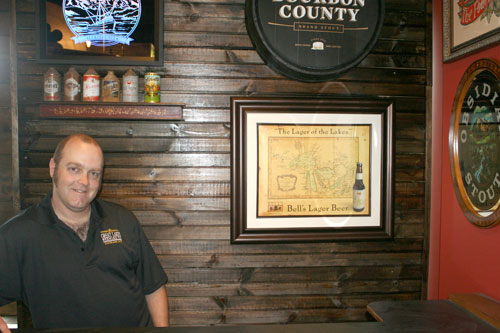 On the eve of the opening of the new Four Firkins Beer Store on 36th Street (Hoigaard Village) in St. Louis Park, we thought we’d share a few photos and our six pack interview with owner Jason Alvey. The store opens Monday morning & it’s beautiful. The new store has more room for more beer, more cooler space and of course more room for Alvey’s collection of pre- and post-prohibition Minnesota breweriana. Check it out when you get a chance.
On the eve of the opening of the new Four Firkins Beer Store on 36th Street (Hoigaard Village) in St. Louis Park, we thought we’d share a few photos and our six pack interview with owner Jason Alvey. The store opens Monday morning & it’s beautiful. The new store has more room for more beer, more cooler space and of course more room for Alvey’s collection of pre- and post-prohibition Minnesota breweriana. Check it out when you get a chance.
What’s changed with your expectations of the Four Firkins over the course of 3.5 years? Did you ever expect to see the sort of growth you’ve seen?
When I was putting together the plans for the new store I could see that the market for good beer was growing rapidly. I also wanted to do it a little differently by focusing on only beer and offering quality customer service at all times. I knew it would work. Now that we are through a recession, and talking about another one, people have changed how they buy things. People want to feel like they are part of their local community and support local businesses. I will say that the speed with which we were accepted into the community was pretty amazing. People saw what we were trying to do and embraced it. Then they told all their friends.
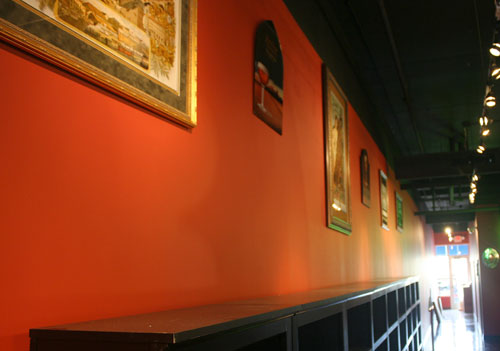 Now, with this new store about to open and our presence in the industry we are in a unique position to start giving back. We are going to try to change some laws here in Minnesota that we feel are very outdated. Our failed t-shirt bill was a learning experience and of course we’ll go back to the capitol with that next year but we’ll also bring a few more bills with us. If you are reading this and live in Minnesota I suspect you’ll be as excited by these bills as we are. More to come later on that.
Now, with this new store about to open and our presence in the industry we are in a unique position to start giving back. We are going to try to change some laws here in Minnesota that we feel are very outdated. Our failed t-shirt bill was a learning experience and of course we’ll go back to the capitol with that next year but we’ll also bring a few more bills with us. If you are reading this and live in Minnesota I suspect you’ll be as excited by these bills as we are. More to come later on that.
We also have other plans in the works. More bus trips to breweries with our friends and customers and other still secret plans that we will announce as things progress. I can assure you they are big ideas. I don’t like to do things by half. As the Firkins continues to grow you should know that everything we do is done out of a love of fine beer and the people who brew it, sell it and consume it. We are here to do what we can for the industry and we intend to do everything we can to make it as good as it can be.
To answer the original question: Yes, we expected this kind of growth, but the support, friends and community we have built along the way were an unexpected and very pleasant surprise.
It’s people like you who made it all happen. Thank you!
Craft beer in Minnesota has certainly changed in the time since you opened. How have your customers changed & evolved over that time?
Everyone is now into craft and good quality import beer. That’s what has changed. It has grown from a little tiny niche to a huge movement. Most of our customers are new to good beer. In fact I would say fully 80% of the people who walk into the Firkins are just regular people who really don’t know much about beer at all but they are excited to try it. Most of these people have never heard of B.A. [Beer Advocate] and probably never will, they are just looking to try some new flavors and have fun sharing beer with their friends.
Every kind of person you can imagine is now a potential good beer drinker. I say “good beer” as opposed to craft beer because there is just as much excitement from our customers about English, German and Belgian beers too. It’s no longer a 25 – 30 year old male dominated demographic. We have people in here from all ages, all income levels and both sexes. Let’s be clear on that one: women like good beer just as much as the guys do!
They are not just wandering in and randomly grabbing stuff either, these people are excited to learn about the beer. They want to talk with us and have many, many questions. It’s a lot of fun!
If people know your story, they know that Summit EPA was a game changer for you. Without playing favorites and without thinking about it too much, name three other local beers that blow you away.
As a member of the Minnesota Craft Brewers Guild and a passionate supporter of locally brewed beer this is going to be tough! OK, personal taste preference only. No favoritism. I am choosing these beers purely because I enjoy them myself, not because I want to show that brewery the love, so to speak.
Let me also explain that as far as my taste goes I am kinda’ through the uber hoppy phase and now enjoy all kinds of beer, especially more subtle ones that many years ago I may have thought were “boring”. Don’t get me wrong, I still love massively hoppy beers when I’m in the mood for them.
OK, now that’s off my chest here you go: in no particular order and with no explanation other than I remember drinking them and saying to myself, “Wow!”
1. Olvalde: Auroch’s Horn
2. Surly: Hell
3. Summit: Unchained #1, Kolsch
You have a background in the cycling industry, care to take a stab at explaining the correlation between beer and bikes?
I think the answer to this one is simple. Bikes and good beer are both beautiful handcrafted things. I think that people who are really into bikes appreciate the work and the passion that goes into making them. Likewise they (we, let’s not forget I’m one of them!) can appreciate the effort, care and hand craftsmanship that goes into making truly great beer. I’m sure it translates into all kinds of things. Coffee, for example. Bike people tend to be really into good coffee as well. I think the real answer to that question is not just about the relationship between cyclists and beer rather it’s more about a kind of person that tends to appreciate the finer things in life.
What can Australian brewers learn (if anything) from the craft brewing boom in the United States?
Australia is in a tough position when it comes to brewing quality beer. They are heading in the same direction as the U.S. but on a much smaller scale. You have to remember there are only 22 million people in the whole country. Think about that for a second. 22 million people spread out on a land mass the size of the lower 48 (that’s for you Greg!). That’s not very many people.
Now add to that the fact that just like here in the U.S. by far the majority of people who drink beer in Australia are drinking mass produced lagers and have no idea what good beer really is. Starting a microbrewery in a place like that is considerably more difficult than it is here. It’s such a limited market, there just aren’t very many people who would drink the beer! It’ll take time and I suspect the market in Australia will simply never even come close to what exists here in the U.S. but Aussie lovers of fine beer will continue to fight the good fight I’m sure.
As for advice? I’d say to any potential Australian brewmaster,”Get your arse over here to the U.S. and see what a craft beer industry really can be!”
If the essence of Jason Alvey was captured in a beer recipe, what would that beer be?
Well, there would be barrels involved. Maybe some newly discovered strains of Brett. Cheesy old hops of course and ideally some angel’s tears.
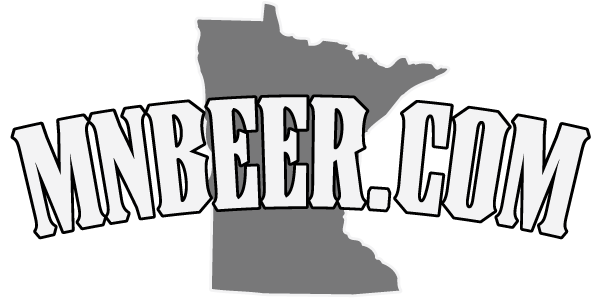



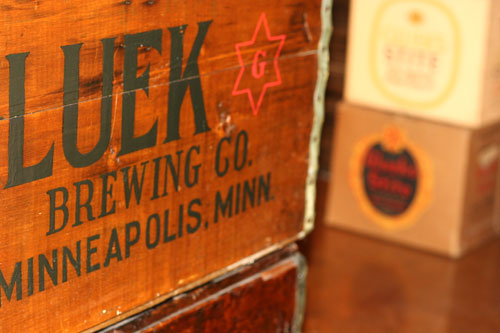
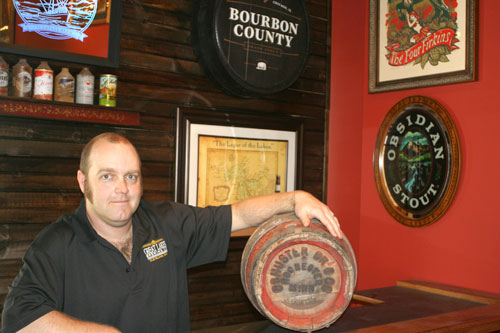
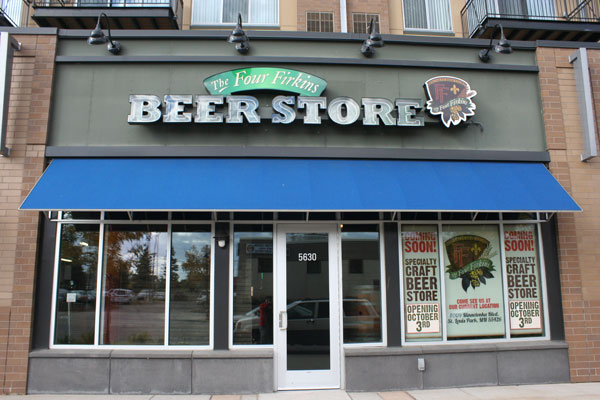
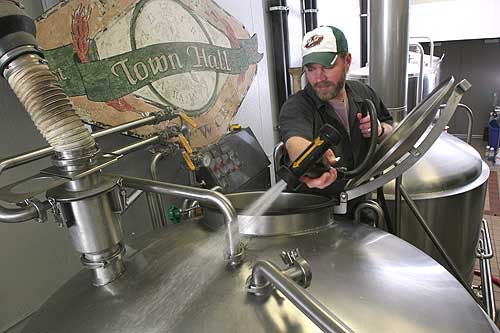

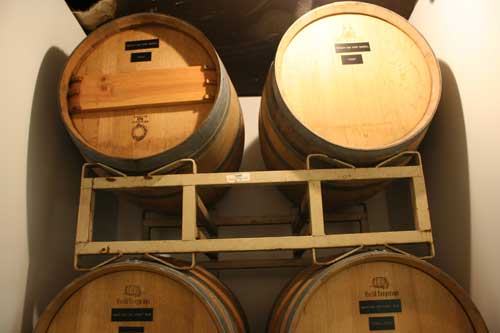
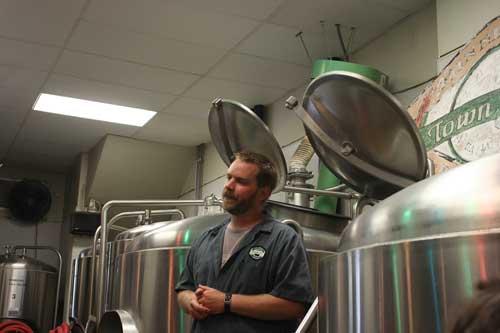


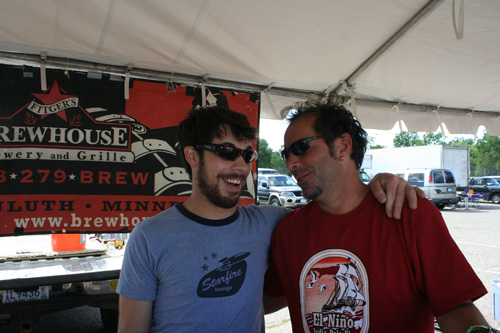

 How long have you been working on this epic? I first recall hearing about it sometime in 2005 and have to imagine that this isn’t a normal research project… the scale of it has to be fairly encompassing…
How long have you been working on this epic? I first recall hearing about it sometime in 2005 and have to imagine that this isn’t a normal research project… the scale of it has to be fairly encompassing…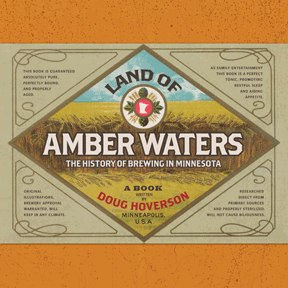 What was the first Minnesota beer to pass your lips? How about the most recent?
What was the first Minnesota beer to pass your lips? How about the most recent?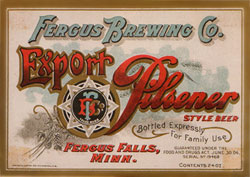 Fergus Falls from 1882-1884 is still ticking me off. I think I’ve got it right in the book, but a lot of the sources were unclear or conflicting, the newspapers in those years were not helpful, and there were so many changes in that period that I’m still not quite sure which brewery ended up as which.
Fergus Falls from 1882-1884 is still ticking me off. I think I’ve got it right in the book, but a lot of the sources were unclear or conflicting, the newspapers in those years were not helpful, and there were so many changes in that period that I’m still not quite sure which brewery ended up as which.